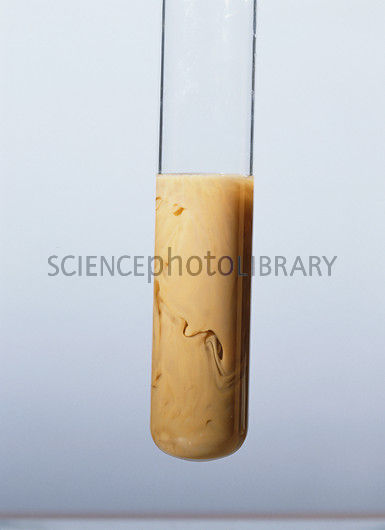Question #73ac3
1 Answer
You are indeed dealing with a double replacement precipitation reaction, a reaction in which two soluble ionic compounds react to form an insoluble precipitate.
If you are familiar with the solubility rules (more here: http://www.csudh.edu/oliver/chemdata/solrules.htm), you'll recognize that both
However, this reaction will not create siginificant amounts of
Silver oxide looks like this:

So, your general reaction actually looks like this:
Since we are dealing with ionic compounds, the complete ionic equation looks like this:
The net ionic equation, which results from eliminating spectator ions, is:
Here's a video of the reaction:

